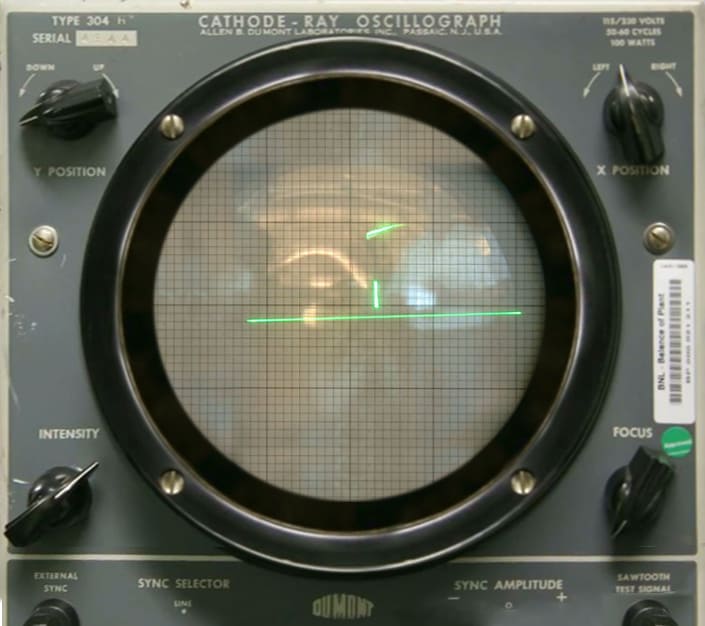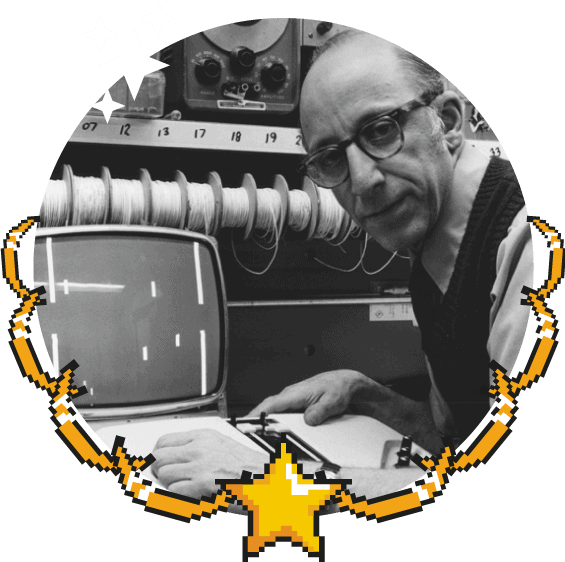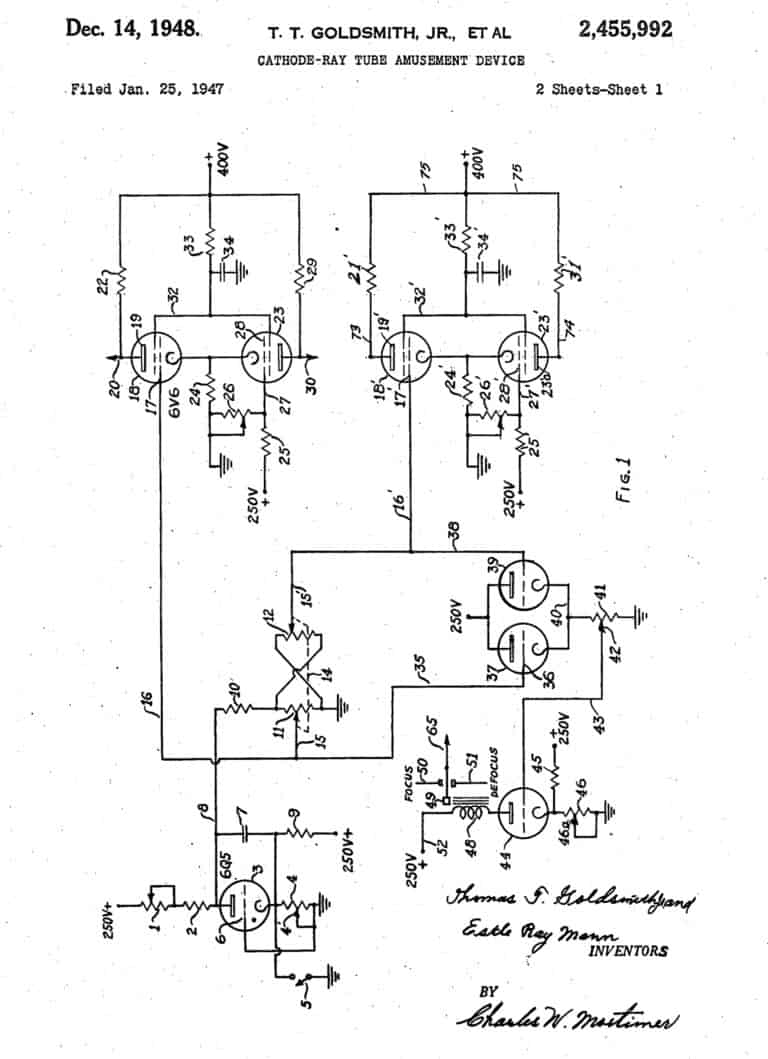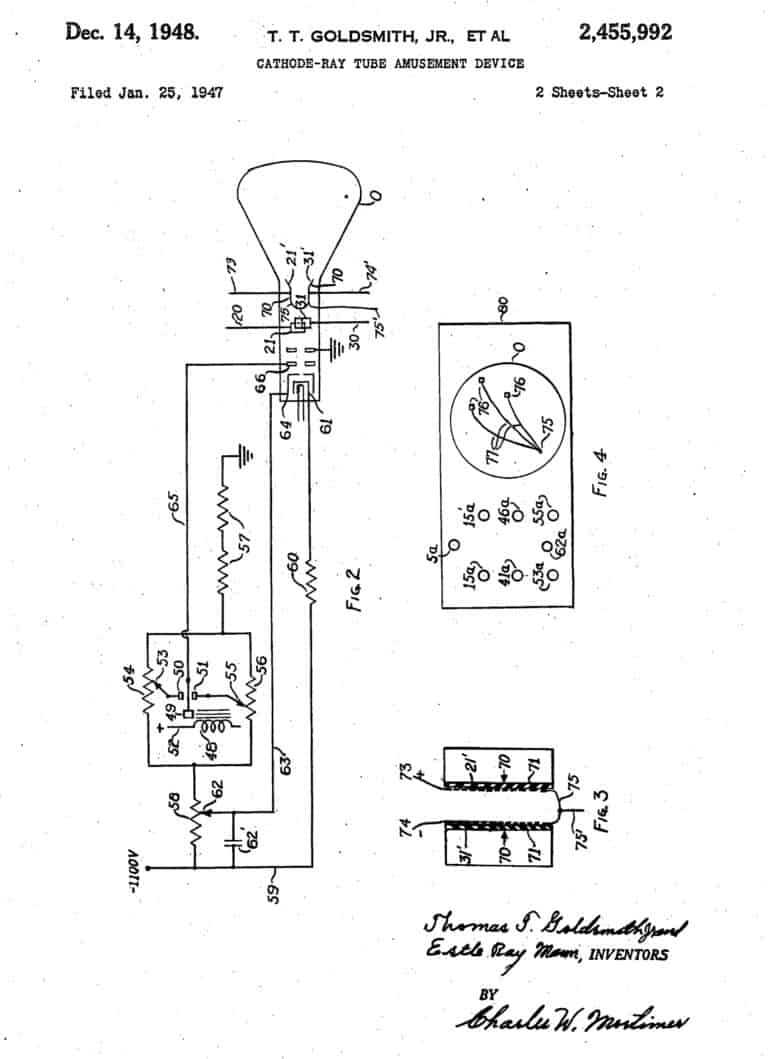A Brief History Of Video Games
Step into WePC's time machine and take a trip back to see the dawn of the video game era
When & How Were Video Games Invented
Many of history’s greatest technological breakthroughs came from the sterile halls of a laboratory and video games are no different.
Before we can even get into what the first video game is, we have to establish how the technology that supported it came about. For that, we have to start in 1947 with the Cathode-Ray Tube Amusement Device. This was a patent created by Thomas T. Goldsmith Jr. and Estle R. Mann for a simple analog electronics game that relied on overlays to provide a complete visual. This reliance on physical overlays and the device’s lack of computing is generally why this invention is often considered the first electronic game, but not the first video game as we know them today.
Similar developments took place in 1951 and 1952. First, British computer scientist Christopher Strachey brought the game checkers to a program that ran on the Nimrod computer. Then, a year later, British professor A.S. Douglas created OXO as part of his University of Cambridge doctoral dissertation, this was the classic game tic-tac-toe ported to an EDSAC computer. Sure, it’s a game, but it’s also a game that has roots back to the Roman Empire and Egypt. These examples were simply being updated for the modern age.
When Was The First Video Game?
So where does the first video game come in? Assuming that the above two developments aren’t considered the first game, the consensus is that Tennis for Two brings together all the pre-existing components into a functional video game system.
Tennis for Two was created by American physicist William Higinbotham. Made with a Donner Model 30 analog computer with a built-in oscilloscope screen, Tennis for Two was made for display at the Brookhaven National Laboratory. Capable of calculating shot trajectories, an impact barrier as a net and even wind resistance for those shots, Tennis for Two was the most sophisticated of early video game examples. With those developments in mind, it’s easy to see why it’s considered the earliest video game by many people.


How Was The First Video Game Invented?
The process by which we make video games has come a long way too, so it’s no surprise that the invention of Tennis for Two looked a lot different from modern game development. Much like the initial cathode-ray tube amusement device that was patented a decade earlier, Higinbotham’s game relied on cathode-ray tubes in an oscilloscope that made use of resistors and capacitors.
This was all detailed in its instruction booklet, where the simulated ideas of gravity and wind resistance were explained through the examples of a bouncing ball or a fired projectile like a bullet or a missile. Even today, the physics engine of modern video games and how they relate to trajectories is still an incredibly important part of the development process.
The motion of the so-called “ball” is controlled by four operational amplifiers with another six used to sense when the ball impacts another simulated surface. These functions were time-shared so that all elements can be generated at once.
What this project benefited from, that the cathode-ray tube amusement device didn’t, were germanium transistors. Becoming more commercially available in the 1950s, these transistors allowed Higinbotham to make fast-switching circuits that displayed images from the three computer outputs at 36 Hertz. This was fast for the time and fast enough that your eyes saw the ball, net, and any other elements on-screen instead of separate images.
After unveiling it in 1958, they improved the initial model a year later by adding a larger screen. There were also options for low or high gravity options that would change how the game plays.
The game was played using two lightweight aluminum controllers that had one button and one turning dial. Pressing that button hit the ball while the dial allowed you to decide the shot angle before “swinging.” An amusing side note is that Higinbotham wanted a second dial to control shot velocity but thought it’d be too complicated. Nowadays, we have studies investigating how modern game console controllers, which have approximately 15 player input mechanisms, may benefit players’ motor skills.
You can read about the mechanisms at play in Tennis for Two here if you’re interested in a detail-specific analysis of how this pioneering machine worked.
The Home Console
An integral part of video game development is the home video game console. With personal computers being traditionally expensive, it was the dedicated game console that brought video games into the houses of those who wouldn’t have been able to afford them initially.
By now, video games and simulations had become more prevalent. MIT student Steve Russell invented the (assumed) first computer-based video game, Spacewar!, in 1962. It spread to those fortunate enough to have computers back then, those being prestigious universities like MIT and other enthusiast centers that could afford this new technology. Meanwhile, similar video game technology was used for war games by the U.S. Defense Department, who feared a conflict with the Soviet Union and wanted a means of exploring potential war scenarios.

But most people didn’t have personal computers or government supercomputers in their homes, so where did the first home console come from? For that, we need to go to a dingy New York City bus station in 1966. There, Sanders Associates, Inc. employee Ralph Baer had a novel idea – what if I could play video games on my television?
A year later, Baer brought the Brown Box into existence, a game console capable of running multiple programs with multiplayer capabilities. One of the initial games available was the early video game classic, tennis. Another year later, in 1968, Baer patented the Brown Box. The blueprints for the Brown Box were used by Magnavox in the creation of the Magnavox Odyssey. Released in 1972, the Magnavox Odyssey was the first commercially available home video game console.
For his contribution to modern video games through the game console, he’s yet another figure who is often called the Father of Video Games.
From the 70s to the 2010s, video gaming technology continued to develop at a rapid pace since the Odyssey hit the scene. Let’s take a bird’s eye view of how we got from the Magnavox Odyssey to the Microsoft Xbox Series X and the PlayStation 5.
Video Game History Timeline
To best capture as much information about the history of video games in as short a guide as possible, we’ve created a timeline that maps important developments in the industry. Whether it’s technological developments or socio-political events that were related and shaped video games as we know them today, you’ll find out how we arrived at the video game industry of today.
1970s
1980s
1990s
2000s
2010s
Video Games Today
As of the writing of this guide, we’re a year into the 2020s. 2020 was a dreary year for many due to the pandemic and subsequent lockdowns, so it’s no surprise that online multiplayer community-oriented games like Animal Crossing: New Horizons, Fall Guys, and Among Us won out over many high profile releases. All games have an emphasis on interconnectivity with bright and cheery color palettes.
The gaming trends for 2021 are still emerging, so instead, we’ll wind this guide down with some statistics about where the gaming industry stands today. With Tennis for Two and the Brown Box in mind, appreciate how far the video games industry has come when reading the below stats:
Video gaming today is a $100 billion global industry. In 2020, it is predicted to hit
The USA, China, and Japan lead in-game market revenue. Per gamingscan.com statistics from 2018,
The largest gaming demographic is 18 to 34 at 38%. The smallest demographic is the elderly (65+) at 6%.
2021 estimates for active gamers worldwide were at 2.81 billion and expected to become 3 billion in 2024. Instead, the circumstances of 2020 pushed that to 3 billion before most estimates. That’s approximately 40% of the population.
Activision Blizzard led market capitalization with $70 billion in March 2021. Following close behind were Nintendo and Electronic Arts.
Around half of all gaming revenue is taken from smartphone games.
Steam still dominates the video gaming market share and its library of 30,000 games is still growing.
¾ of all U.S households are occupied by at least one person who plays video games.
North America leads the charge for virtual reality with nearly one in five consumers using it in 2020.
AR and VR technology pioneered for video games is predicted to impact 23 million jobs by 2030.
Summary
How some of these projections pan out is anybody’s guess. After 2020, we saw firsthand how unforeseen circumstances can shake up an industry, for better or worse.
What’s certain is that video gaming has taken over the world despite its humble beginnings, and they aren’t going anywhere. This interactive medium has secured itself as a multi-billion dollar industry that has the potential to offer the same artistic merit as movies, with added interactivity.
Not only that, but video games have become cultural and social mainstays that have influenced how we interface with technology. With both A.I. development and the breakout of VR and AR, the rise of the video gaming industry has benefited all of us in the technological innovations that were unearthed along the way.






